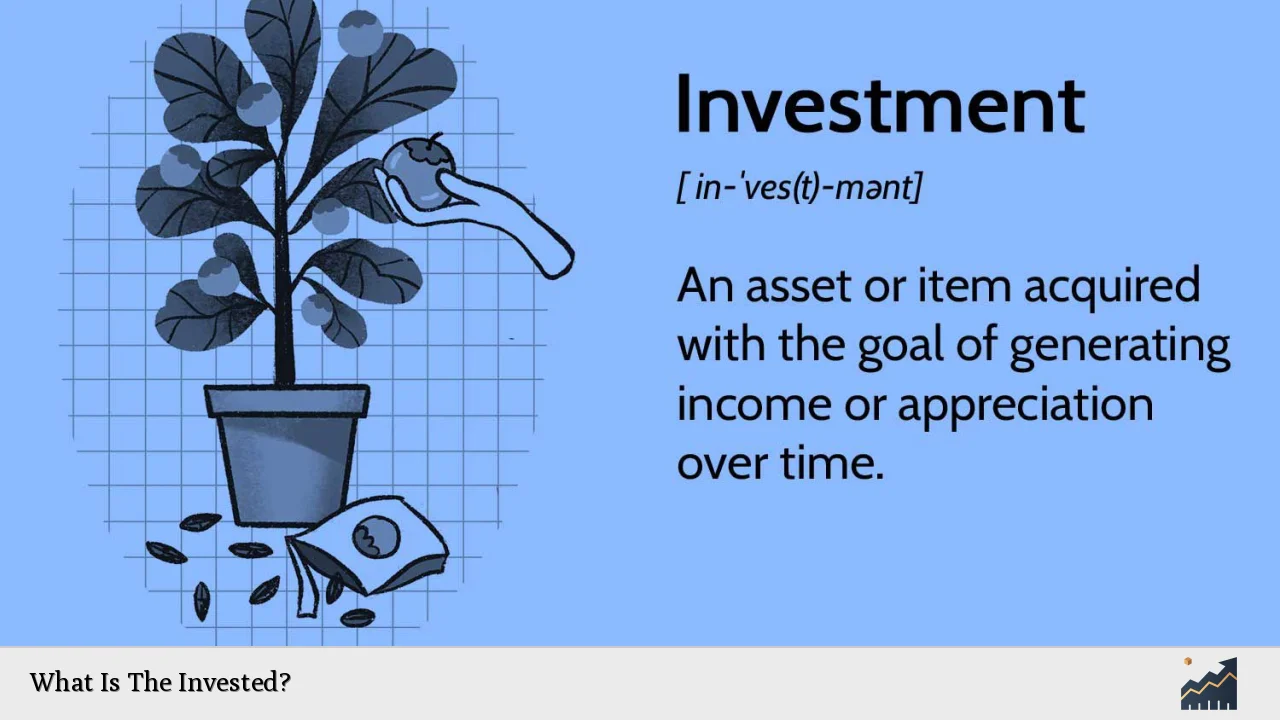Investing is the process of allocating resources, typically money, with the expectation of generating an income or profit over time. This fundamental activity is crucial for individuals and organizations looking to grow their wealth and secure their financial futures. At its core, investing involves putting money into various assets or projects that are expected to yield positive returns. These returns can manifest in several forms, including capital appreciation, interest income, or dividends.
The landscape of investing is vast and varied. Investors can choose from a wide array of options, ranging from stocks and bonds to real estate and mutual funds. Each investment type carries its own risk and return profile, making it essential for investors to understand their personal financial goals and risk tolerance before committing capital.
Investing is not merely about buying assets; it is also about making informed decisions based on research, market trends, and individual circumstances. This article will explore the intricacies of investing, including its types, strategies, benefits, risks, and common pitfalls.
| Aspect | Description |
|---|---|
| Definition | Allocating resources with the expectation of generating income or profit. |
| Types | Stocks, bonds, real estate, mutual funds, etc. |
Understanding Different Types of Investments
Investing encompasses various asset classes that cater to different financial goals and risk appetites. Understanding these types is crucial for constructing a well-rounded investment portfolio.
- Stocks: When you buy stocks, you purchase a share of ownership in a company. Stocks can provide high returns through price appreciation and dividends but come with higher volatility.
- Bonds: Bonds are debt securities issued by governments or corporations. They tend to offer lower returns compared to stocks but provide more stability and regular interest payments.
- Real Estate: Investing in real estate involves purchasing property for rental income or appreciation. It requires significant capital but can diversify your portfolio.
- Mutual Funds: These are pooled investment vehicles managed by professionals that invest in a diversified portfolio of stocks and bonds. They offer diversification but come with management fees.
- Exchange-Traded Funds (ETFs): Similar to mutual funds but traded on stock exchanges like individual stocks. ETFs typically have lower fees than mutual funds.
Each investment type has its unique characteristics that can influence an investor’s choice based on their financial objectives.
The Importance of Diversification
Diversification is a critical strategy in investing that involves spreading investments across various asset classes to reduce risk. By diversifying your portfolio, you can mitigate the impact of poor performance in any single investment.
- Risk Reduction: Different asset classes respond differently to market conditions. For instance, when stocks decline during a recession, bonds may perform well.
- Smoother Returns: A diversified portfolio tends to exhibit less volatility than a concentrated one. This stability can be crucial for long-term investors.
- Access to Multiple Markets: Diversification allows investors to tap into various sectors and geographic regions, enhancing growth potential.
To achieve effective diversification, investors should consider their risk tolerance and investment horizon while selecting a mix of assets that align with their financial goals.
Investment Strategies for Success
Developing a sound investment strategy is essential for achieving financial objectives. Here are some common strategies employed by investors:
- Buy-and-Hold: This long-term strategy involves purchasing securities and holding them for an extended period regardless of market fluctuations. It capitalizes on the market’s historical upward trend over time.
- Dollar-Cost Averaging: This technique involves investing a fixed amount regularly regardless of market conditions. It helps mitigate the effects of volatility by averaging out purchase costs over time.
- Value Investing: Popularized by investors like Warren Buffett, this strategy focuses on identifying undervalued stocks with strong fundamentals. Investors buy these stocks with the expectation that their prices will rise as the market recognizes their true value.
- Growth Investing: This approach targets companies expected to grow at an above-average rate compared to their industry peers. These investments often reinvest profits back into the business rather than paying dividends.
Each strategy has its pros and cons; therefore, investors should choose one that aligns with their risk tolerance and financial goals.
The Risks Involved in Investing
While investing offers opportunities for wealth growth, it also comes with inherent risks that investors must understand:
- Market Risk: The possibility that an entire market will decline in value due to economic factors affecting all investments within that market.
- Credit Risk: The risk that a bond issuer will default on its payments or fail to repay the principal amount at maturity.
- Liquidity Risk: The risk associated with not being able to sell an investment quickly without incurring significant losses.
- Inflation Risk: The danger that rising inflation will erode purchasing power and diminish real returns on investments.
Understanding these risks enables investors to make informed decisions about asset allocation and risk management strategies.
Common Investment Pitfalls
Investors often encounter several pitfalls that can hinder their financial success:
- Emotional Decision-Making: Allowing emotions like fear or greed to dictate investment choices can lead to impulsive decisions that may result in losses.
- Lack of Research: Failing to conduct thorough research before investing can lead to poor choices based on incomplete information or market hype.
- Ignoring Fees: High management fees can erode investment returns over time. Investors should be aware of all costs associated with their investments.
- Timing the Market: Attempting to predict market movements can be risky; instead, focusing on long-term strategies often yields better results.
By recognizing these pitfalls, investors can take proactive measures to avoid them and enhance their chances of success.
FAQs About What Is The Invested?
- What does it mean to invest?
Investing means allocating resources like money into assets or projects expecting positive returns over time. - What are the main types of investments?
Main types include stocks, bonds, real estate, mutual funds, and ETFs. - Why is diversification important?
Diversification reduces risk by spreading investments across various asset classes. - What are common investment strategies?
Common strategies include buy-and-hold, dollar-cost averaging, value investing, and growth investing. - What risks should I be aware of when investing?
Key risks include market risk, credit risk, liquidity risk, and inflation risk.
Investing is a powerful tool for building wealth over time. By understanding different investment types, employing effective strategies, recognizing risks, and avoiding common pitfalls, individuals can enhance their financial literacy and make informed decisions tailored to their goals. Whether you’re a novice investor or looking to refine your approach, continuous learning about investments is essential for long-term success.

